10 Must-See Destinations in Burdur, Turkey
From awe-inspiring ancient cities to enchanting natural wonders, Burdur offers a captivating and diverse array of attractions for travelers looking to discover the hidden treasures of Turkey. Whether you're a history enthusiast, a nature lover, or simply seeking a unique and unforgettable adventure, the must-see places in Burdur promise to leave a lasting impression on your heart and soul. So, don't wait any longer – pack your bags and embark on an unforgettable journey through the mesmerizing beauty and rich history of Burdur, Turkey.
1. Salda Lake
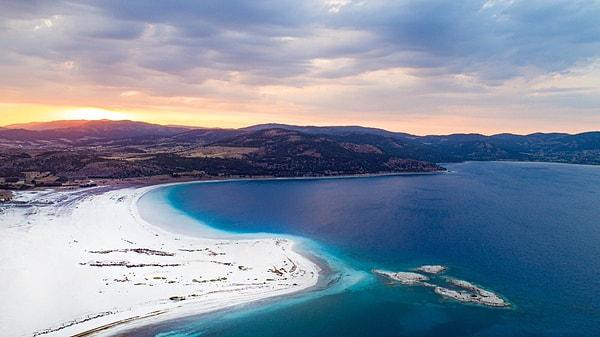
Salda Lake is a mesmerizing natural wonder known for its pristine turquoise waters and unique white sand beaches. Often referred to as 'Turkey's Maldives,' this lake is one of the deepest and cleanest freshwater lakes in the country, with a depth reaching up to 196 meters. The surrounding landscape is a harmonious blend of lush forests, rolling hills, and an extinct volcanic crater, providing an idyllic setting for visitors seeking tranquility and breathtaking views. The lake's mineral-rich white sand and clay are said to possess therapeutic properties, attracting both tourists and locals looking to benefit from the healing aspects of the area.
Visitors to Salda Lake can indulge in a variety of activities, such as swimming, sunbathing, and picnicking along the picturesque shoreline. The lake's crystal-clear waters and serene atmosphere make it an ideal spot for photography enthusiasts to capture stunning images of the vivid scenery. For those interested in hiking and trekking, the nearby forests and hills provide ample opportunities to explore and enjoy the diverse flora and fauna that inhabit the region. As you immerse yourself in the enchanting beauty of Salda Lake, you'll find it easy to understand why this captivating destination has become a cherished symbol of Turkey's natural wonders.
2. Sagalassos Ancient City
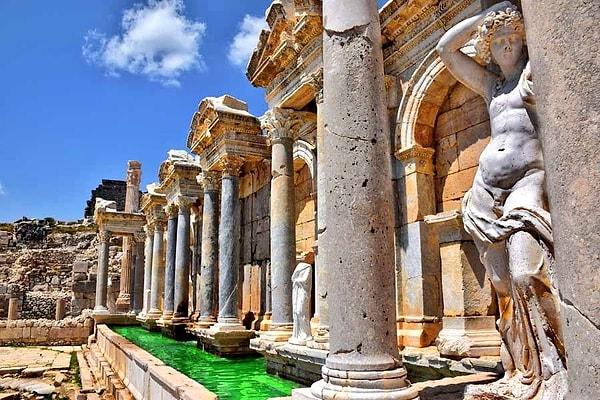
Sagalassos Ancient City is a remarkable archaeological site that once thrived as a prominent urban center in the ancient region of Pisidia. Established around the 12th century BCE, the city reached its zenith during the Hellenistic and Roman periods, becoming an essential hub for trade, culture, and administration. Perched on the southern slopes of the Taurus Mountains at an altitude of 1,450 to 1,700 meters, Sagalassos boasts well-preserved ruins that offer a glimpse into the grandeur and sophistication of its past. The site has been under continuous excavation since 1990, revealing a wealth of historical treasures and insights into the city's evolution over the centuries.
As you wander through the remnants of Sagalassos, you'll encounter a captivating array of structures that showcase the city's architectural prowess and artistic refinement. Notable highlights include the monumental Antonine Nymphaeum, a stunning two-story fountain dedicated to Emperor Marcus Aurelius; the beautifully preserved Roman theatre, capable of seating 9,000 spectators; and the monumental Heroon, a sanctuary built to honor the city's founder. In addition, visitors can marvel at the well-preserved remains of the Agora, the city's central market and social space, and the intricate mosaic floors of the Roman baths. Sagalassos Ancient City, with its fascinating history and striking ruins, offers a captivating experience for history buffs and casual travelers alike, transporting you back in time to the grandeur and glory of a bygone era.
3. Lavender Gardens
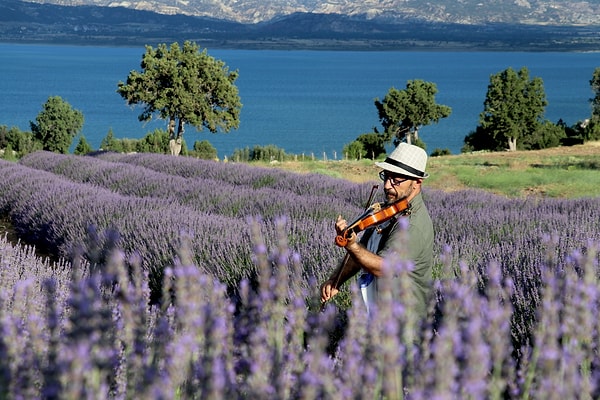
The Lavender Gardens of Burdur, are drawing visitors from all corners of the world. During the blooming season, which typically spans from June to August, the gardens paint the landscape with a sea of purple hues, creating an awe-inspiring and soothing atmosphere. The calming fragrance of the lavender flowers fills the air, making a visit to these gardens a truly sensory experience.
Aside from being a feast for the eyes, the Lavender Gardens of Burdur play a crucial role in the local economy. The harvested lavender is used in a variety of products such as essential oils, soaps, and cosmetics, as well as for culinary purposes. While visiting the gardens, travelers can participate in lavender-themed workshops and learn about the cultivation, harvesting, and distillation processes. The gardens also make for an ideal backdrop for photography enthusiasts, who can capture the dreamy vistas and vibrant colors in their frames.
4. Burdur Archaeological Museum

Burdur Archaeological Museum is a remarkable institution that showcases the region's rich cultural and historical heritage. Established in 1969, the museum houses a vast collection of artifacts that date back to prehistoric times, through the Hellenistic, Roman, Byzantine, and Ottoman periods, providing a comprehensive glimpse into the area's ancient civilizations. The museum's collections include archaeological findings from nearby ancient cities such as Sagalassos, Kibyra, and Kremna, making it an essential destination for history enthusiasts and those eager to explore Turkey's storied past.
As you wander through the halls of the Burdur Archaeological Museum, you'll discover a wide variety of exhibits, including intricately carved statues, mosaics, ceramics, coins, and jewelry. Among the most notable displays are the well-preserved marble statues from the Roman era, including the striking Hadrian statue and the larger-than-life Hercules sculpture. The museum also features an impressive collection of ancient inscriptions, offering a fascinating insight into the lives, beliefs, and customs of the people who once inhabited this region. With its captivating exhibits and expertly curated collections, the Burdur Archaeological Museum invites you on a journey through time, unveiling the extraordinary history of the ancient civilizations that left their mark on the land we now call Turkey.
5. Lake Burdur
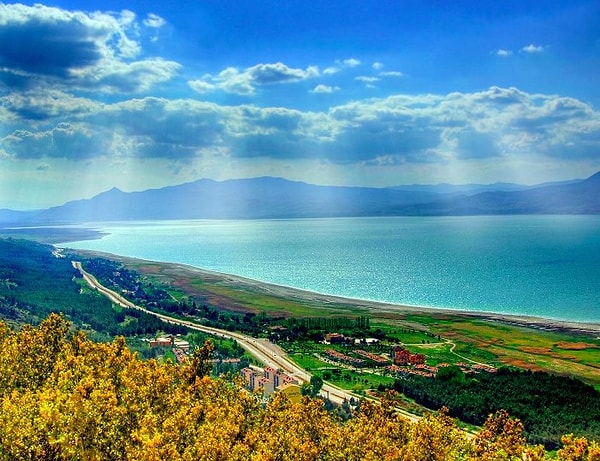
Lake Burdur is a unique saline lake that spans approximately 250 square kilometers, making it one of the country's largest lakes. Situated in the Burdur province, this strikingly beautiful lake is surrounded by undulating hills, arid landscapes, and fertile agricultural land. Known for its diverse ecosystem and rich birdlife, Lake Burdur is an important destination for both migratory and endemic bird species. Its varying salinity levels support a distinctive mix of organisms and contribute to the lake's distinctive pinkish hue.
Environmental enthusiasts and birdwatchers flock to Lake Burdur to witness the vibrant avian population that graces its waters, including the globally endangered white-headed duck. During the winter months, the lake becomes a vital refuge for many migratory birds, offering visitors a rare opportunity to observe these fascinating creatures in their natural habitat. The serene atmosphere, captivating wildlife, and mesmerizing landscapes of Lake Burdur make it a must-visit destination for travelers seeking an off-the-beaten-path experience in Turkey.
6. Insuyu Cave
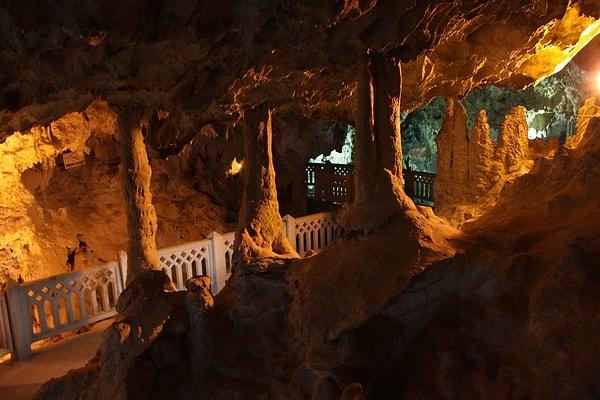
Insuyu Cave is a captivating natural wonder that draws visitors with its striking geological features and enchanting atmosphere. Discovered in 1952, this limestone cave extends approximately 597 meters in length and is considered one of the first caves in Turkey to be open for tourism. The cave's unique subterranean environment, with its vast chambers, intricate stalactite and stalagmite formations, and underground lakes, offers an otherworldly experience to those who venture within.
As you journey through Insuyu Cave, you'll be greeted by a series of interconnected chambers and passageways that boast impressive calcite formations, which have formed over thousands of years due to the slow dripping of mineral-rich water. With its surreal ambiance and fascinating geological features, Insuyu Cave provides visitors with a truly unforgettable experience that highlights the wonders of Turkey's underground world.
7. Susuz Caravanserai
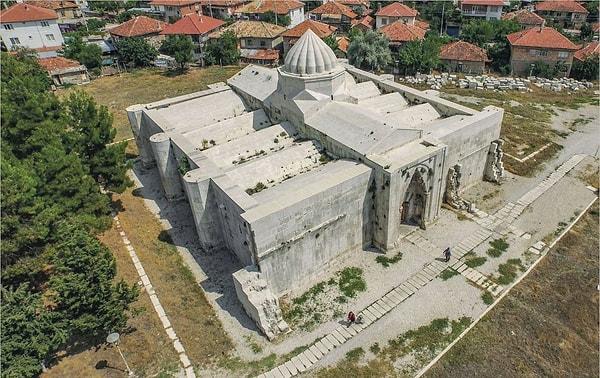
Susuz Caravanserai is a striking historical monument that bears witness to the bustling trade and cultural exchanges that once took place along the ancient Silk Road. Dating back to the Seljuk period in the 13th century, this well-preserved caravanserai served as a vital rest stop and safe haven for travelers, merchants, and their animals as they traversed the long and perilous trade routes. Characterized by its robust architecture and intricate stone masonry, Susuz Caravanserai stands as an enduring testament to the rich history and skilled craftsmanship of the Seljuk era.
Today, visitors to Susuz Caravanserai can explore the impressive ruins of this once-thriving complex, including its central courtyard, surrounding chambers, and the remnants of a mosque. As you wander through the site, you can almost hear the echoes of merchants bargaining over precious goods, the laughter of weary travelers sharing stories, and the clatter of hooves on cobblestones. A visit to Susuz Caravanserai not only provides a fascinating glimpse into the past but also serves as a reminder of the timeless human desire for connection, commerce, and cultural exchange.
8. Kremna Ancient City
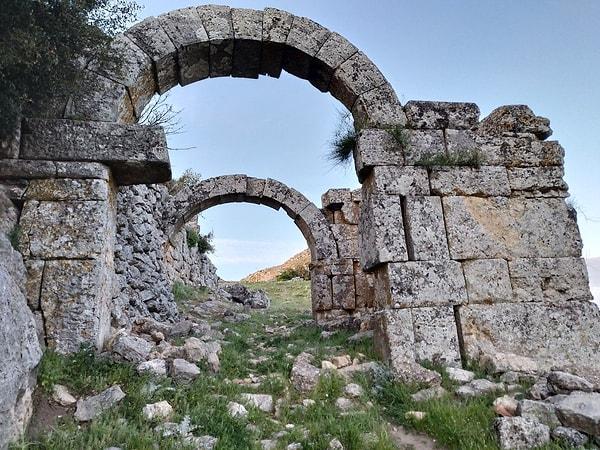
Kremna Ancient City is an intriguing archaeological site that dates back to the Hellenistic period. Established around the 2nd century BC, the city flourished under the rule of the Kingdom of Pisidia, a region in ancient Anatolia. Kremna's strategic position on a high plateau, surrounded by steep cliffs, made it an easily defensible city. Throughout its history, the city changed hands among various civilizations, including the Romans, Byzantines, and Seljuks, leaving behind a rich tapestry of architectural and cultural remnants that continue to fascinate visitors today.
As you wander through the ancient ruins of Kremna, you'll discover remnants of the city's past, such as the well-preserved theater, which once had a seating capacity of around 4,000 spectators, and the agora, a public square that was the center of social, political, and economic activities. The site also features remnants of temples, a gymnasium, a monumental fountain, and an extensive necropolis. Intricate carvings and inscriptions on the remaining structures offer glimpses into the daily lives of Kremna's inhabitants and their religious beliefs. Today, Kremna Ancient City stands as a testament to the region's rich historical legacy and provides visitors with a fascinating journey through the ages, allowing them to experience the enduring beauty and cultural significance of this once-great city.
9. Hacılar Höyük
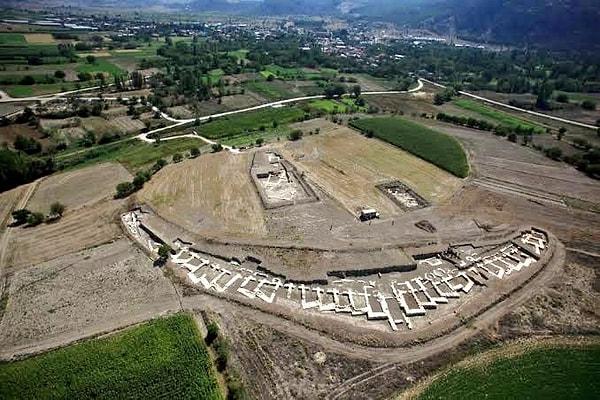
Hacılar Höyük is a fascinating archaeological site that dates back to the Neolithic and Chalcolithic periods, providing invaluable insights into the early history of human settlements and civilizations in the region. The site was first discovered in 1953 by British archaeologist James Mellaart, who would later gain fame for his work on the nearby site of Çatalhöyük. Excavations at Hacılar Höyük have revealed multiple layers of occupation, ranging from the early Neolithic period around 7000 BCE to the later Chalcolithic period around 5000 BCE.
The artifacts unearthed at Hacılar Höyük offer a glimpse into the lives of its ancient inhabitants, showcasing the development of their culture, art, and technology. Among the most significant discoveries are intricately decorated pottery, figurines, and tools made from stone, bone, and obsidian. The site is particularly famous for its female figurines, which are thought to have had religious or ritual significance. These figurines, crafted from clay and adorned with elaborate patterns, are indicative of the complex artistic and religious practices of the time. Furthermore, the architectural remains and evidence of agriculture and animal husbandry at Hacılar Höyük provide crucial information about the daily life and societal organization of early human settlements in the region. As such, Hacılar Höyük is an important destination for anyone interested in exploring the rich history and archaeology of Turkey and the wider Anatolian region.
10. Grand Mosque
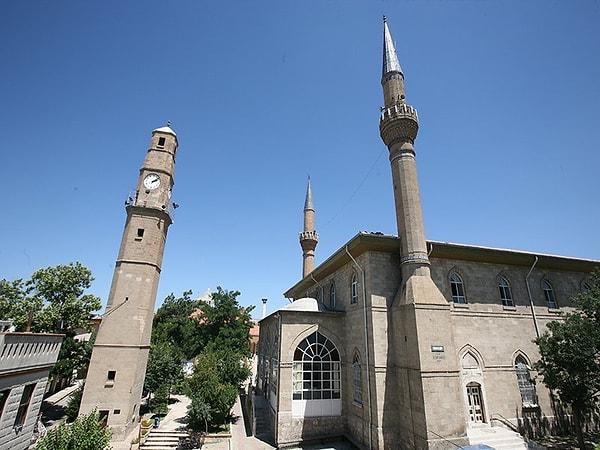
Grand Mosque is a historic and architectural landmark located in the city of Burdur, a province in southwestern Turkey. This beautiful mosque, constructed in the late Seljuk period around the early 14th century, is a testament to the region's rich Islamic heritage and its prominent role in the cultural and religious life of the city. The mosque's elegant design, characterized by a combination of Seljuk and Ottoman architectural elements, features a simple yet striking exterior with a wooden roof, stone walls, and an ornate minaret.
Upon entering the Grand Mosque, visitors are greeted by a serene atmosphere imbued with a sense of history and spirituality. The interior showcases a blend of intricate woodwork, carved stone, and decorative plaster, which together create a harmonious and calming ambiance. Of particular note are the mosque's wooden ceilings, adorned with geometric patterns and floral motifs, and the beautifully crafted wooden pulpit (minbar) that stands as a symbol of Islamic artistry. As a living monument to the past and an active place of worship, the Grand Mosque of Burdur is an essential stop for anyone seeking to experience the region's history, culture, and architectural splendor.
Keşfet ile ziyaret ettiğin tüm kategorileri tek akışta gör!

Send Comment